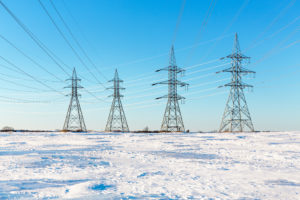The “Southern Spirit Transmission” project calls for the construction of a new 400-mile transmission line across Texas, Louisiana, and Mississippi.
________________________________________________
 Aplan to link ERCOT to the eastern electric grid has drawn renewed public attention after The Dallas Morning News this month highlighted some of its potential reliability benefits.
Aplan to link ERCOT to the eastern electric grid has drawn renewed public attention after The Dallas Morning News this month highlighted some of its potential reliability benefits.
Designated the “Southern Spirit Transmission” project, the plan would result in the construction of a new 400-mile transmission line across Texas, Louisiana, and Mississippi. The company behind the project, Pattern Energy, anticipates construction to begin next year, with completion set for 2029.
In a January 4 article, Dallas Morning News consumer affairs columnist Dave Lieber noted that the project has generated little public attention even though it could potentially bring more power to the state during emergency conditions, such as what had occurred in 2021 with Winter Storm Uri.
He also noted that outside investors — as opposed to ratepayers — would finance the lines. “Consumers would not – repeat, not – pay for this $2.6 billion project,” he wrote.
REGULATORY APPROVAL
The Federal Energy Regulatory Commission and the Public Utility Commission have both granted approvals for the $2.6 billion project, which was formally known as the Southern Cross project. Right-of-way applications remain pending before the public service commissions of Louisiana and Mississippi, according to reports.
Eventually, the lines could bring as much as 2,000 megawatts of power into Texas. That’s enough for about 400,000 homes during high usage days. It also would allow the export of excess Texas solar and wind power to other states.
However, the issue of federal oversight remains. Currently ERCOT, as a largely independent grid, remains free from most FERC oversight. That could change with additional interconnections to outside grids.
But Beth Garza, a former independent monitor of the ERCOT grid, told a CBS News reporter that she believes there are ways to connect and keep ERCOT’s independence.
“I’m not looking for federal oversight of the electricity system but there are ways to increase ERCOT’s ability to draw on remote resources from outside the region,” she said. “As we think about other winter storms that have hit other parts of the country, those areas that have the ability to import lots of power remotely are the ones that are most able to survive the weather.”
A similar project designated “Tres Amigas” also would have allowed ERCOT to export wind power to other grids. That $1.6 billion project was proposed in 2010 and had an estimated 2016 completion date, but never came to fruition.

